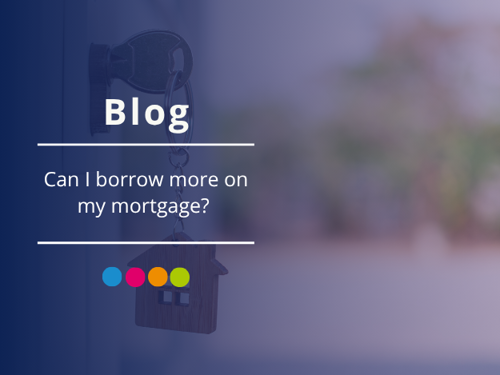
If you’re thinking about borrowing extra money against your current mortgage, what you’re looking for is called a further advance. Many homeowners consider this option when they need extra funds to finance home improvements, consolidate debts, or cover other personal expenses.
You might be asking: is it possible to borrow more on my mortgage? And if so, how does it work? In this blog, we’ll explain how further advances work, whether you might qualify, and what to do if your application is declined.
Can you borrow more on your mortgage?
Yes, in many cases, you can borrow more on your existing mortgage. This is known as a further advance and it is a common way to access extra funds without remortgaging or taking out a separate loan.
To apply, you’ll typically need to contact your current mortgage lender and ask if they will allow this. If approved, the amount is added to your mortgage and repaid under new or revised terms. This can be a cost-effective solution, especially if you have a good interest rate on your current mortgage.
How easy is it to borrow more on your mortgage?
Your chances of being accepted depend on several key factors:
- Your financial situation (income, debts, credit score)
- Your existing mortgage terms
- The lender’s criteria
- The purpose of the loan
Each lender has its own rules and criteria. Some are flexible and open to lending for a variety of reasons, while others may be more cautious.
For example, debt consolidation can be a concern for some lenders, as it may indicate financial difficulty. This could lead to your request being declined. Still, rejection isn't guaranteed, so it’s worth checking with your lender before ruling it out.
How much more can I borrow on my mortgage?
The amount you may be able to borrow depends on several factors including:
- The amount of equity you have in your home.
- Your income and expenses (affordability).
- Your credit history.
- The lender’s limits and lending policies.
Lenders will complete an affordability check to make sure you can handle the higher repayments. If they think the extra borrowing would stretch your finances, they may reduce the amount or decline the application altogether. However, if you have a lot of equity in the property, it can boost your chances of being approved.
What if you’re declined?
If your application is turned down, there may be other options available. This could include:
- Remortgaging to a new lender: Switching providers might offer better terms or more flexibility. Just be aware of potential early repayment charges or loss of a favourable interest rate.
- Second charge mortgage: This is a separate loan secured against your home, often through a different lender. It can be a good alternative if a further advance or remortgage isn’t an option.
- Unsecured personal loan: For smaller amounts, an unsecured loan might be quicker and easier to arrange.
- Wait and reassess: If you can wait, it may be a good option. Improving your financial situation, credit score, or budgeting habits may make approval more likely in the future.
Summary
Borrowing more on your mortgage can be a useful way to access extra funds for a range of purposes. However, approval isn't guaranteed, and lenders assess each application differently. If you’re unsure whether a further advance is right for you, it’s a good idea to speak with your mortgage lender or a qualified adviser. They can help you understand your options, explain the possible risks, and guide you toward the most suitable solution for your needs.
Loans are secured against property - Think carefully before securing other debts against your home. Your home may be repossessed if you do not keep up repayments on a mortgage or any other debt secured on it.




